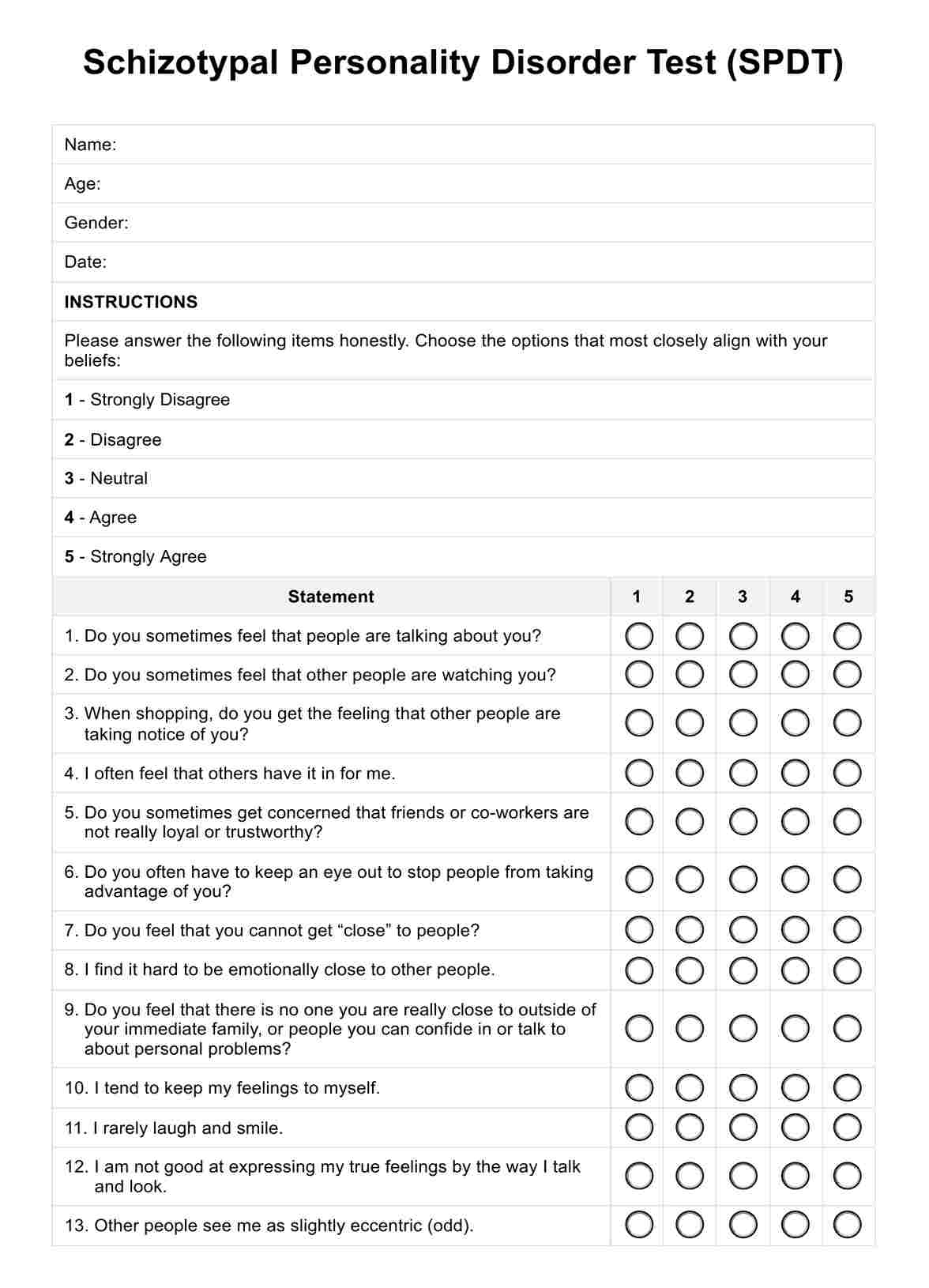A schizotypal personality might often display unusual or eccentric behavior, have odd or disjointed patterns of speech, and have magical beliefs or superstitions that influence their behavior and thinking.

Schizotypal Personality Disorder Test (SPDT)
Explore the use of a self-report tool to screen for symptoms of schizotypal personality disorder among clients. Download a free printable test here!
Use Template
Schizotypal Personality Disorder Test (SPDT) Template
Commonly asked questions
Schizotypal personality disorder typically begins in early adulthood and is a lifelong condition that requires ongoing treatment and management.
Treatment for schizotypal personality disorder often involves a combination of psychotherapy, such as cognitive-behavioral therapy, and medication to address any co-occurring mental health conditions. The goal is to help the individual improve their social, cognitive, and coping skills.
EHR and practice management software
Get started for free
*No credit card required
Free
$0/usd
Unlimited clients
Telehealth
1GB of storage
Client portal text
Automated billing and online payments











